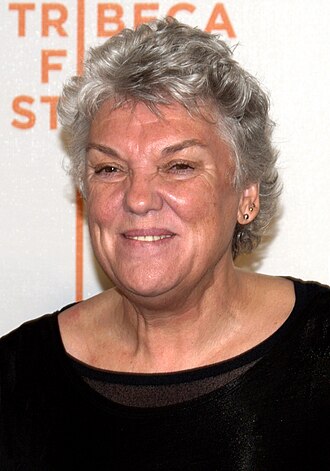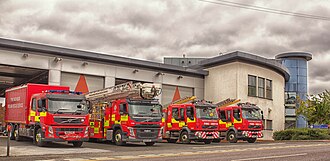Discover Your Roots
SIGN UPDiscover Your Roots
SIGN UPTyne is an English gender-neutral name that holds the charming meaning of "A River." This name is rooted in English origins and holds a gender-neutral status. It is associated with various geographical locations, such as the River Tyne in England and Scotland, as well as the Port of Tyne and a tributary of the South Esk River in Tasmania, Australia. Notable individuals bearing this name include Tyne Daly, an esteemed American actress, and Tyne O'Connell, a prominent British author. In addition, the name Tyne has been linked to transportation, with references to ships, engines, and lifeboats. The name also holds significance in other areas, including the British Royal Navy and Marvel Comics. Tyne is a name that beautifully encompasses the essence of flowing and dynamic waters.

Ellen Tyne Daly, born on February 21, 1946, is an esteemed American actress with a career spanning over six decades, marked by numerous leading roles in both movies and theater. Her outstanding contributions have earned her six Emmy Awards for television, a Tony Award, and a well-deserved induction into the American Theatre Hall of Fame in 2011. Daly's journey began on the New York summer stock stage, leading to her Broadway debut in 1967's "That Summer – That Fall." Her portrayal as Detective Mary Beth Lacey in the CBS police drama "Cagney & Lacey" garnered her four Primetime Emmy Awards, further solidifying her prominence in the industry. Additionally, she achieved critical acclaim for her performances in "Christy" and "Judging Amy," earning her additional Emmy Awards. Daly's theatrical prowess shone through in her Tony Award-winning role in the Broadway revival of "Gypsy." Her versatility extended to the big screen, with notable appearances in "The Enforcer," "Hello, My Name Is Doris," and "The Ballad of Buster Scruggs." Beyond her professional endeavors, Daly's roots trace back to Madison, Wisconsin, and she has Irish heritage. Her upbringing in Rockland County, New York, and early exposure to performing arts alongside her family laid the foundation for her remarkable career. Daly's educational pursuits led her to Brandeis University and the American Musical and Dramatic Academy. Throughout her career, she has

Tyne and Wear is a ceremonial county in North East England, bordered by Northumberland to the north and County Durham to the south. The largest settlement is the city of Newcastle upon Tyne, with a population of 1.14 million in 2021. The county comprises five metropolitan boroughs: Gateshead, Newcastle upon Tyne, Sunderland, North Tyneside, and South Tyneside, collaborating through the North East Combined Authority. Notable geographic features include the River Tyne and River Wear, after which the county is named, and its coastline along the North Sea. Historical landmarks include St. Bede's monastery and Souter Lighthouse, the first electric structure of its kind. The county's local government history involves various reforms and proposals, ultimately leading to the establishment of the county of Tyne and Wear in 1974. The county's climate is monitored by two official Met Office stations. Tyne and Wear is known for its urbanized areas, diverse settlements, and rich historical background.

The Tyne and Wear Metro is a light rail rapid transit system serving several areas in Tyne and Wear, including Newcastle upon Tyne, Gateshead, North Tyneside, South Tyneside, and the City of Sunderland. It is owned and operated by the Tyne and Wear Passenger Transport Executive (Nexus), making it fully under public ownership and operation. The Metro was originally conceived during the early 1970s and construction work began in 1974. The system comprises a total of 60 stations across two lines, covering 77.5 km of track. Notably, the Metro has undergone various improvements, including the replacement of its existing rolling stock and the implementation of the Metro Flow scheme to increase service frequency, reduce journey times, and improve reliability levels. The system utilizes former railway infrastructure, and it was intended to be the core of a new integrated transport network. The funding for the scheme came from both central government grants and local sources. The Tyne and Wear Metro continues to play a vital role in the region's transportation network, and ongoing improvements are planned for the future.

Tyne and Wear Fire and Rescue Service, formerly known as the Tyne and Wear Metropolitan Fire Brigade, is the primary fire and rescue service for the metropolitan boroughs of Newcastle Upon Tyne, Gateshead, North Tyneside, South Tyneside, and Sunderland, catering to a population of 1.14 million individuals across a 208 square mile area. With 17 fire stations and 25 fire engines, the service is overseen by the Tyne and Wear Fire and Rescue Authority, with Peter Heath serving as the chief fire officer. Established in 1974, the service brought together various local fire services, uniting them under one cohesive entity. In 2004, the name was changed to Tyne and Wear Fire and Rescue Service to reflect the evolving role of fire services across the UK. The service's performance is periodically inspected by His Majesty's Inspectorate of Constabulary and Fire & Rescue Services, with fire stations strategically located across the region to ensure efficient coverage. The service's dedication to public safety and emergency response is evident through its ongoing initiatives and collaborations with other emergency services.

The Tyne and Wear County Council, which operated from 1974 to 1986, was the governing body for the metropolitan county of Tyne and Wear in northeast England. Situated at Sandyford House in Newcastle upon Tyne, the council held political control under the Labour Party throughout its existence, with Michael Campbell serving as its leader. Following its abolition, the council was replaced by five unitary authorities: Metropolitan Borough of Gateshead, Newcastle City Council, North Tyneside Council, South Tyneside Council, and Sunderland City Council. The council had its first election in 1973 and oversaw subsequent elections in 1977 and 1981. Despite its dissolution, the impact of the Tyne and Wear County Council is still evident in the region's governance.
All images displayed on this page are sourced from Wikipedia or Wikimedia Commons.We use these images under their respective Creative Commons or public domain licenses. Wherever applicable, author attributions and license information are provided. If you believe an image is used incorrectly or outside its license terms, please contact us so that we can review and correct the issue.